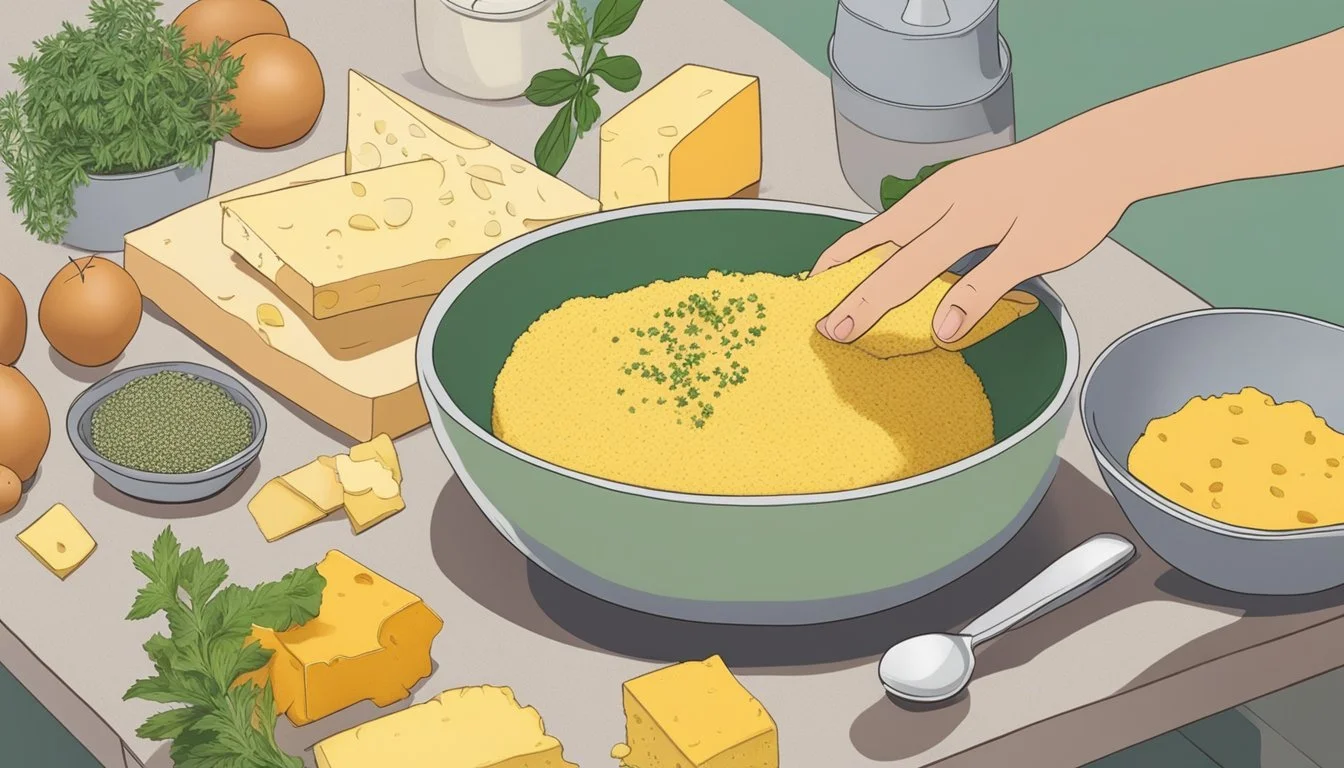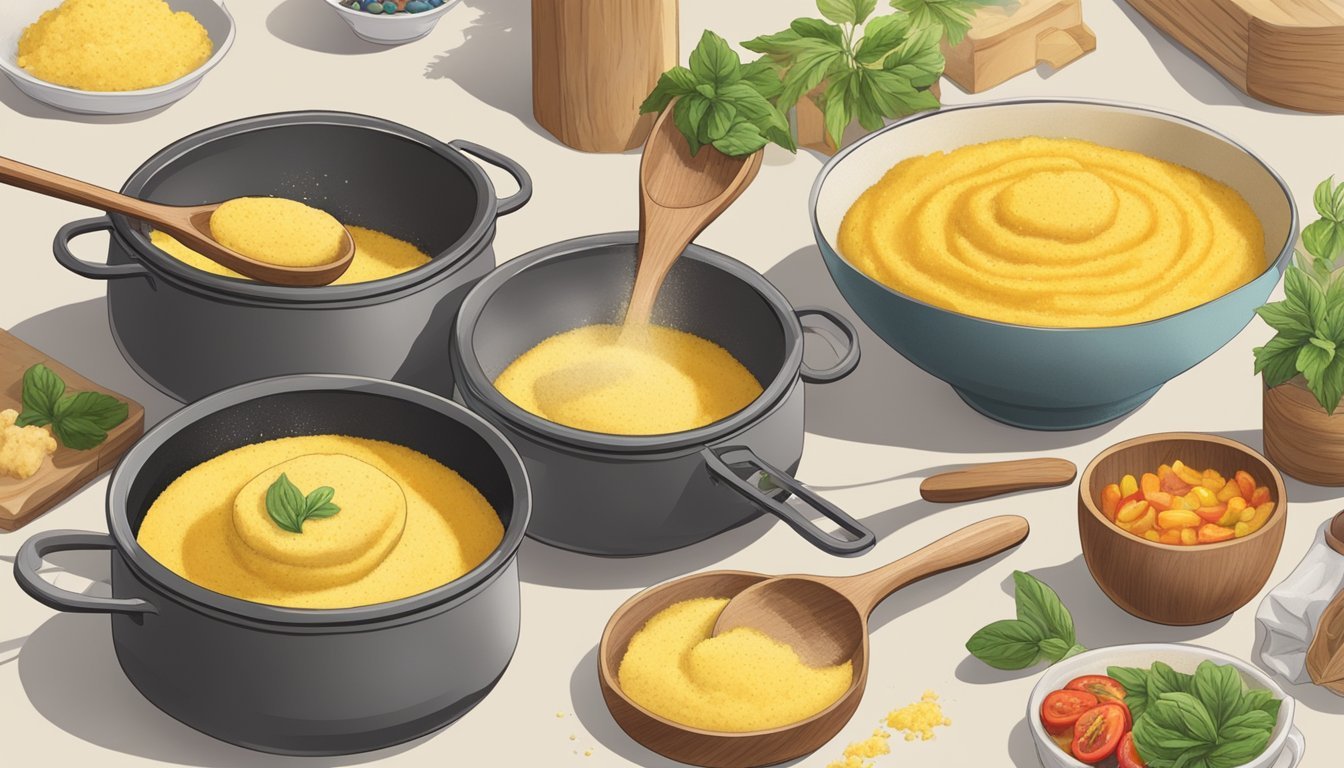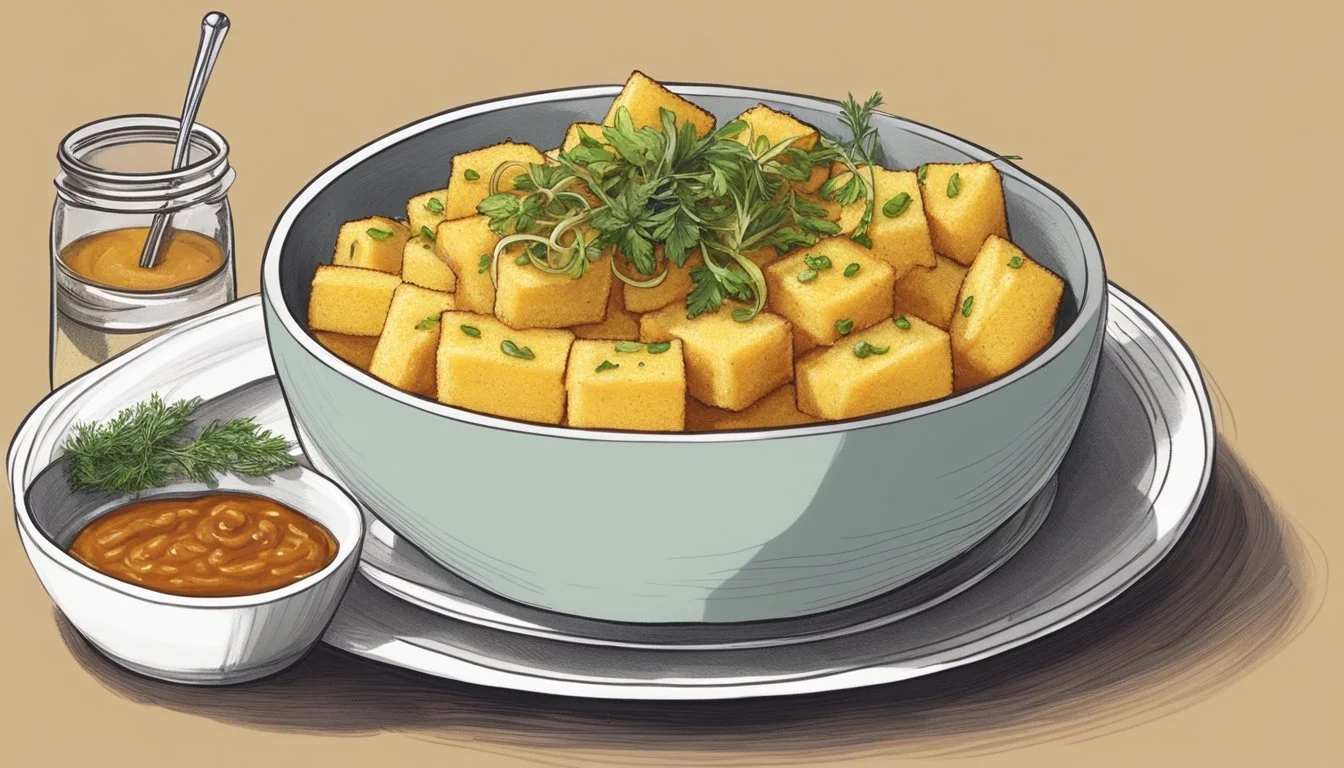Instant Polenta Recipes Sweet and Savory
Quick and Delicious Dishes to Try
Instant polenta offers a versatile foundation for both sweet and savory dishes, catering to an array of palates while also aligning with gluten-free dietary requirements. This corn-based meal, originating from Italy, has become a beloved comfort food across the globe due to its ease of preparation and adaptable nature. Whether it's a rich, creamy base complemented by bold, savory toppings or a soft, sweet bed for fruit and syrups, instant polenta can transform a meal with its soothing, earthy flavor and satisfying texture.
In the realm of savory options, instant polenta pairs exceptionally well with cheeses, herbs, and proteins, offering a hearty dish that can be enjoyed at any time of day. The traditional slow-cooked method is streamlined with instant polenta, allowing for a quick preparation that doesn't sacrifice the creamy consistency that is characteristic of a well-made polenta. Home cooks can seamlessly incorporate this ingredient into everything from baked casseroles to pan-seared cakes without extensive cooking experience.
For those with a sweet tooth, instant polenta serves as an excellent base for desserts and sweet breakfasts. When cooked with milk or a milk alternative and sweetened to taste, it can be topped with honey, fresh berries, or a sprinkle of cinnamon for a comforting and quick meal. The naturally gluten-free nature of corn-based polenta also makes it an accessible option for those with gluten sensitivities, ensuring a wider audience can enjoy these instant polenta recipes without concern.
What Is Polenta
Polenta is a versatile dish made from cornmeal, originating from Italy and enjoyed in various consistencies, from firm and sliceable to creamy and soft.
Polenta Versus Grits
While both polenta and grits are dishes derived from ground corn, they are distinct in several ways. Polenta is typically made from flint corn, which is a variety native to Italy and has a harder, more granular texture. On the other hand, grits are usually prepared from dent corn, predominantly found in the Southern United States, and tend to be softer and finer. The granules of flint corn are less starchy, which gives polenta its characteristic texture.
Types of Cornmeal
Cornmeal can be categorized according to its grind size:
Coarsely Ground Cornmeal: Often used for traditional polenta, as it provides a robust texture.
Finely Ground Cornmeal: Results in a creamier consistency, sometimes referred to as instant polenta due to its quick cooking time.
Both types come from the same grain but are processed differently to achieve varying textures and cooking times.
Polenta in Italian Cuisine
Polenta holds a significant place in Italian cuisine. It serves as a staple dish in Northern Italy, where it might be enjoyed as a hearty side dish, a base for toppings, or even as a main course. Polenta's versatility allows it to be baked, fried, or grilled, making it an essential and adaptable component of Italian cooking traditions.
Selecting Ingredients for Polenta
Selecting the ideal ingredients is crucial for creating delicious sweet or savory Instant Polenta dishes. The type of cornmeal and its freshness contribute significantly to the texture and flavor of the polenta.
Choosing the Right Cornmeal
The foundation of any polenta recipe is cornmeal. One should select cornmeal specifically labeled as polenta or coarsely ground cornmeal for a traditional texture. The coarser grind helps achieve a creamy texture while maintaining some bite, an essential characteristic of high-quality polenta.
Fine-Cornmeal: Results in a smoother, less textured polenta.
Coarse-Cornmeal: Ideal for a classic, rustic texture.
Importance of Freshness
The freshness of cornmeal impacts polenta's flavor profile. Fresh cornmeal offers a natural, sweet corn flavor which can elevate a simple dish to something special. While making polenta, the freshness of all ingredients plays a role in producing a rich and creamy final product. A simple sniff test can often determine the cornmeal’s freshness; it should smell sweet and earthy, not musty or stale. Storing cornmeal in an airtight container, preferably in a cool, dark location, also helps preserve its freshness.
Grains, when fresh, release starches more effectively during cooking, creating a natural creaminess without the need for excessive additives. Therefore, using the freshest grains will yield a more desirable creamy texture and enhanced flavors, whether for sweet or savory polenta creations.
Cooking Techniques
Cooking instant polenta can be both a savory and sweet culinary delight, depending on the selected ingredients and the method of cooking. The following techniques highlight methods of cooking polenta using an Instant Pot pressure cooker, which provides convenience and consistent results.
Cooking Instant Polenta
To prepare instant polenta, one typically combines polenta with a liquid such as water or stock and cooks it until it thickens and softens. In an Instant Pot pressure cooker, the polenta is cooked at high pressure, which reduces cooking time significantly. For example, adding polenta, water, and salt to the Instant Pot and cooking it on high pressure for 10 minutes will yield a creamy texture. After cooking, a natural pressure release of about 15 minutes helps prevent splattering and ensures even cooking.
Pot-in-Pot Cooking Method
The pot-in-pot method involves cooking the polenta in a smaller pot placed inside the Instant Pot pressure cooker on a raised trivet. This technique is beneficial when cooking polenta with other ingredients that require different cooking times. A typical pot-in-pot method starts by adding a trivet and water to the main pot and then combining the polenta, liquid, and seasoning in the smaller pot placed on the trivet. Cook it on high pressure to achieve an evenly cooked polenta without burning or sticking to the bottom of the pot.
Whisking for Consistency
Whisking is a crucial step in ensuring a lump-free and creamy polenta. When introducing polenta into the liquid, it should be done slowly while continuously whisking. This is particularly important in the initial stages of cooking—whether using the direct pot method or the pot-in-pot approach. Whisking every minute or so as the mixture comes to a boil or when combining ingredients for pressure cooking helps achieve a smooth consistency.
The equipment typically used for these methods includes an Instant Pot pressure cooker, a silicone or metal whisk, and, if utilizing the pot-in-pot method, a compatible stainless-steel inner pot and trivet. Using the right equipment ensures the cooking process is efficient and leads to perfectly cooked polenta every time.
Sweet Polenta Recipes
Sweet polenta dishes offer comforting textures and can be a delightful base for various flavors, especially when using maple syrup for a natural sweetness. These recipes can create satisfying breakfast options or delectable desserts.
Polenta as Breakfast Porridge
To make Polenta Breakfast Porridge, one will need coarsely ground polenta combined with milk or water. They should cook the blend in the Instant Pot or on the stove until it reaches a creamy consistency. For a sweet version, adding a touch of maple syrup can bring a comforting sweetness suitable for a morning meal. Serving suggestions might include a garnish of fresh berries, a sprinkle of cinnamon, or a dollop of Greek yogurt for added creaminess and a tangy balance to the sweet porridge.
Baking with Polenta
Using polenta in baking opens up a realm of dessert possibilities. An Oven-Baked Polenta Cake can be a unique take on traditional cakes, offering a fine crumb and a gentle crunch. The recipe typically involves a mix of polenta, flour, eggs, butter, and sugar, and can be infused with citrus zest or topped with a maple syrup glaze to enhance its flavor profile. The batter should be poured into a prepared pan and baked until golden and set, resulting in a cake that can be served as a sweet treat or an accompaniment to afternoon tea.
Savory Polenta Recipes
Savory polenta is a versatile dish that can be the foundation for a variety of hearty toppings and mix-ins. Whether stirred with cheese for a creamy comfort dish or topped with meat and vegetables for a complete meal, these recipes offer rich flavors and satisfying textures.
Cheesy Polenta Dishes
Polenta becomes extraordinarily comforting when cheese is incorporated into the mix. For a simple yet delicious dish, one can stir Parmesan into creamy polenta until it's thoroughly melted and evenly distributed, which pairs excellently with a drizzle of olive oil for added richness.
Vegan options can also be delightful, with nutritional yeast or vegan cheese alternatives providing a similar umami flavor.
A Cheesy Polenta example might include:
1 cup instant polenta
4 cups water
1/2 cup grated Parmesan cheese
2 tablespoons olive oil
Salt and pepper to taste
Note: Vegan cheese can replace Parmesan to accommodate dietary preferences.
Polenta with Meat and Vegetables
For those seeking a heartier dish, polenta provides an excellent base to support a variety of meats and vegetables.
Sausage and Mushroom Polenta: Cook sliced sausage until browned, adding mushrooms to the pan until they release their moisture and develop a deep color. Serve atop smooth polenta for a rich, satisfying meal.
A Chicken and Roasted Vegetable Polenta can include:
1 cup instant polenta
4 cups chicken broth
1/2 cup roasted vegetables (What wine goes well with roasted vegetables?) (like zucchini, peppers, and onions)
1 cooked chicken breast, shredded or diced
Marinara sauce, as desired
Bold flavors can easily be showcased in these combinations, with marinara sauce or a ratatouille (What wine goes well with ratatouille?) adding layers of taste to the polenta base. Sautéed vegetables also make an excellent topping, providing both color and nutrition.
Enhancing Polenta Flavor
Polenta's mild corn flavor serves as a versatile base that can be significantly enhanced with the right amalgamation of herbs, spices, butter, and cheese.
Herbs and Spices
The infusion of herbs and spices can transform polenta from a simple dish to a flavor-laden experience. Garlic adds a pungent depth, often sautéed until fragrant before incorporating. Black pepper provides a spicy kick, best when freshly ground. Robust herbs such as thyme integrate a subtle earthiness, and a bespoke blend of spices should be tailored to complement the sweetness of the corn and the profile of accompanying dishes.
Key herbs and spices:
Garlic (sautéed before adding)
Black Pepper (freshly ground)
Thyme (fresh or dried)
The Role of Butter and Cheese
Butter and cheese are pivotal in enriching polenta's texture and taste. Unsalted butter, added after cooking, lends a creamy consistency and allows for precise seasoning control. A generous helping of cheese can elevate the dish to a new level of indulgence. Parmesan cheese, with its salty and nutty flavor profile, is a classic choice, often grated over the top or stirred in until melted. For a tangier twist, goat cheese offers a creamy and distinctive flavor that pairs exceptionally well with polenta's sweetness.
Recommended dairy additions:
Unsalted Butter (stirred in after cooking)
Parmesan Cheese (grated or stirred in)
Goat Cheese (crumbled or blended for a creamy consistency)
Incorporating a careful selection of these elements can result in a truly memorable polenta dish.
Side Dishes and Main Courses
Instant polenta provides a versatile base that can transform sides into comforting complements and act as the centerpiece in hearty main courses.
Polenta as a Side Dish
Polenta serves as an excellent side dish, given its creamy texture and ability to absorb flavors. For instance, Creamy Polenta can be elevated with the incorporation of sautéed vegetables or a rich topping like fried cabbage and onions. This combination pairs well with various proteins, such as grilled chicken or fish, enhancing the overall dining experience.
Side Dish Pairings:
Grilled Chicken or Fish
Skillet Meatballs
Tacos
A simple side dish of creamy polenta can become the perfect vessel for Ikea-style Swedish Meatballs, merging the mild taste of polenta with the savory spices of the meatballs.
Integrating Polenta into Main Dishes
When considering polenta in main dishes, it acts not only as a complement but as the foundation. Red Wine Braised Short Ribs are a luxurious option where the richness of the red wine reduction and the tenderness of the short ribs marry well with the neutral palate of polenta. Similarly, skillet-seared Meatballs nestled atop a bed of polenta form a fulfilling, protein-packed selection.
Main Dish Examples:
Polenta with Red Wine Braised Short Ribs
Polenta topped with Skillet Meatballs
For those who prefer a slightly different texture, baked polenta offers a variation that maintains the flavor profile but adds a firmer bite, suitable for dishes where a solid base is preferable.
Dietary Considerations
When preparing instant polenta recipes, it's important to consider dietary needs such as vegetarian and vegan preferences, as well as allergies and gluten sensitivity. Tailoring polenta dishes to these dietary requirements can be straightforward, ensuring that the meal is both delicious and inclusive.
Vegetarian and Vegan Options
For vegetarians, instant polenta can be prepared with a variety of vegetable broths or milks. Vegans can replace dairy with plant-based milks such as almond, soy, or oat. Toppings and accompaniments for savory versions might include sautéed vegetables, while sweet options can feature fruits and maple syrup. Nutritional yeast can substitute for cheese to provide a cheesy flavor without dairy.
Dairy Substitutes for Vegan Polenta:
Coconut Milk
Soy Milk
Adding these substitutes to the basic polenta mixture can result in a creamy texture without using animal products.
Allergies and Gluten Sensitivity
Polenta is naturally gluten-free since it is made from cornmeal. However, one must ensure that the cornmeal is not cross-contaminated with gluten-containing products. For those with allergies, it's crucial to avoid cross-contamination with allergens and to check labels for potential traces of nuts, soy, or dairy.
Gluten-Free Considerations:
Ensure cornmeal is certified gluten-free
Prevent cross-contamination with gluten products
For additional nutrition information, those with dietary considerations should look for fortified cornmeal or accompany the polenta with nutrient-rich vegetables and proteins to create a balanced meal.
Tips and Tricks
Polenta offers versatility in both preparation and presentation. Achieving the perfect texture and maintaining freshness can be effortless with a few savvy approaches.
Cooking Spray for Polenta Cakes
When transforming leftover polenta into firm, savory cakes, the right preparation of the baking dish is crucial. Coating the dish with cooking spray ensures that the polenta cakes will release easily after baking. Additionally, the cooking spray aids in achieving a golden-brown crust without sticking.
Spray: Generously apply cooking spray on the baking dish.
Pour: Transfer the polenta mixture and spread evenly.
Chill: Allow the polenta to set in the refrigerator until firm before baking.
Meal Prep and Storage
Polenta is an easy-to-make staple that’s perfect for meal prep. For those preparing polenta in advance or handling leftovers, proper storage extends its shelf life and preserves its texture.
Cool: Let the polenta cool to room temperature before storing.
Refrigerate: Keep the polenta in an airtight container; it stays good for up to 3-5 days.
Reheat: Gently reheat in the microwave or on the stovetop, adding a touch of water or stock to regain creaminess.
Leftover Polenta: Leftovers can be repurposed into various dishes. Spread it flat in a tray to set, then cut into shapes for grilling, sautéing, or as a base for toppings.








